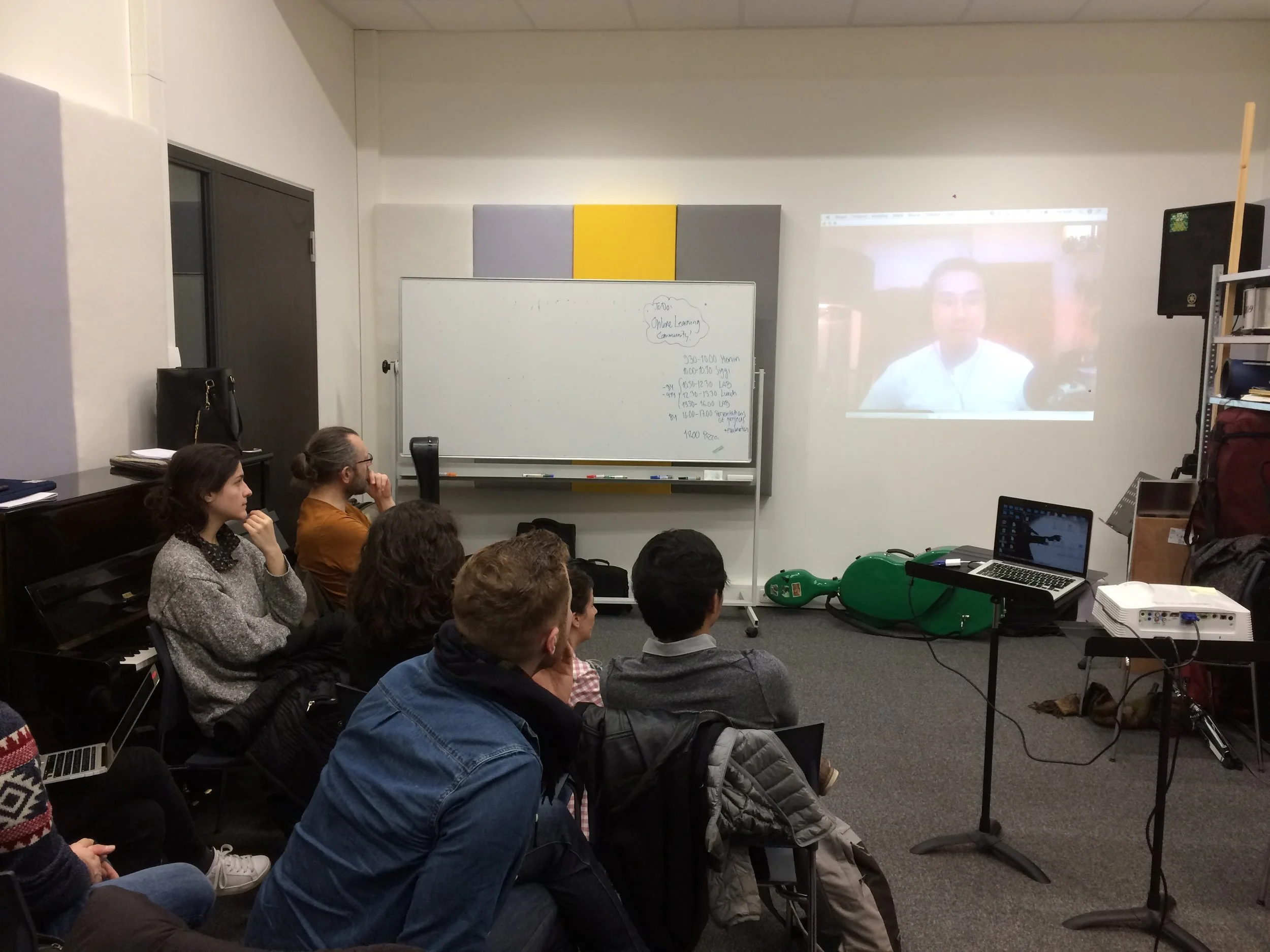Online Learning - Cross-Arts
BY WORKING GROUP 3 IN THE STRATEGIC PARTNERSHIP "NAIP - TRAINING ARTISTS WITHOUT BORDERS", FUNDED BY THE ERASMUS+ PROGRAMME
Krista de Wit (née Pyykönen), chair, Hanze University of Applied Sciences: Prince Claus Conservatoire Groningen (PCC)
Steinunn Knútsdóttir, Iceland University of the Arts, Department of Performing Arts (IUA)
Alexander Roberts, Iceland University of the Arts, Department of Performing Arts (IUA)
Sigurður Halldórsson, Iceland University of the Arts, Department of Music (IUA)
Karst de Jong, Royal Conservatoire The Hague (KC)
Lex van den Broek, Royal Conservatoire The Hague (KC)
Patrik Sörling, Stockholm University of the Arts, University College of Opera (SKH)
Thanks to the staff and students of the Blended Mobility courses for the pictures presented on this site.
Edited and coordinated by Þorgerður Edda Hall
Published in October 2018
This publication was supported by the Erasmus+ Programme of the European Commission. This publication reflects the views only of the author, and the Commission cannot be held responsible for any use which may be made of the information contained herein.
Introduction
The objective of the online learning working group of the Erasmus+ Strategic Partnership NAIP: Training Artist without Borders, was to explore possibilities of collaboration, creation and learning through the internet. This was done to maximize the effect of the cross-fertilization, which is built in the structure of the NAIP programme, where students and staff from various countries and cultures work together on creative collaboration.
The intellectual outputs that the working group realized during the two years were the following:
To create, plan and host a Blended Mobility Programme and make a course description that could be used by all HEIs that are interested in exploring online approaches to creative collaborative practice.
To draw together testimonials of project participants in various roles and document material of the project work in a video documentary.
The course description for the Blended Mobility Programme was developed and piloted twice over the two years. The 2017 (World Wide Web) and 2018 (Online Learning Cross-Arts) editions of the course were built on roughly the same course description, with some modifications and fine-tunings in pedagogical terms in the second year.
During the two-year project, a great deal of the work was documented with photos, video and audio. This material reflects the learning process of all participating individuals as well as collective learning by the partner institutions. A documentary has been made using this material so that some examples of the process may be viewed. One of the students who participated in the Blended Mobility Course in 2017, Mervin Wong, has edited this documentary. It shows an overview of the process and an insight into the approaches and working methods.

